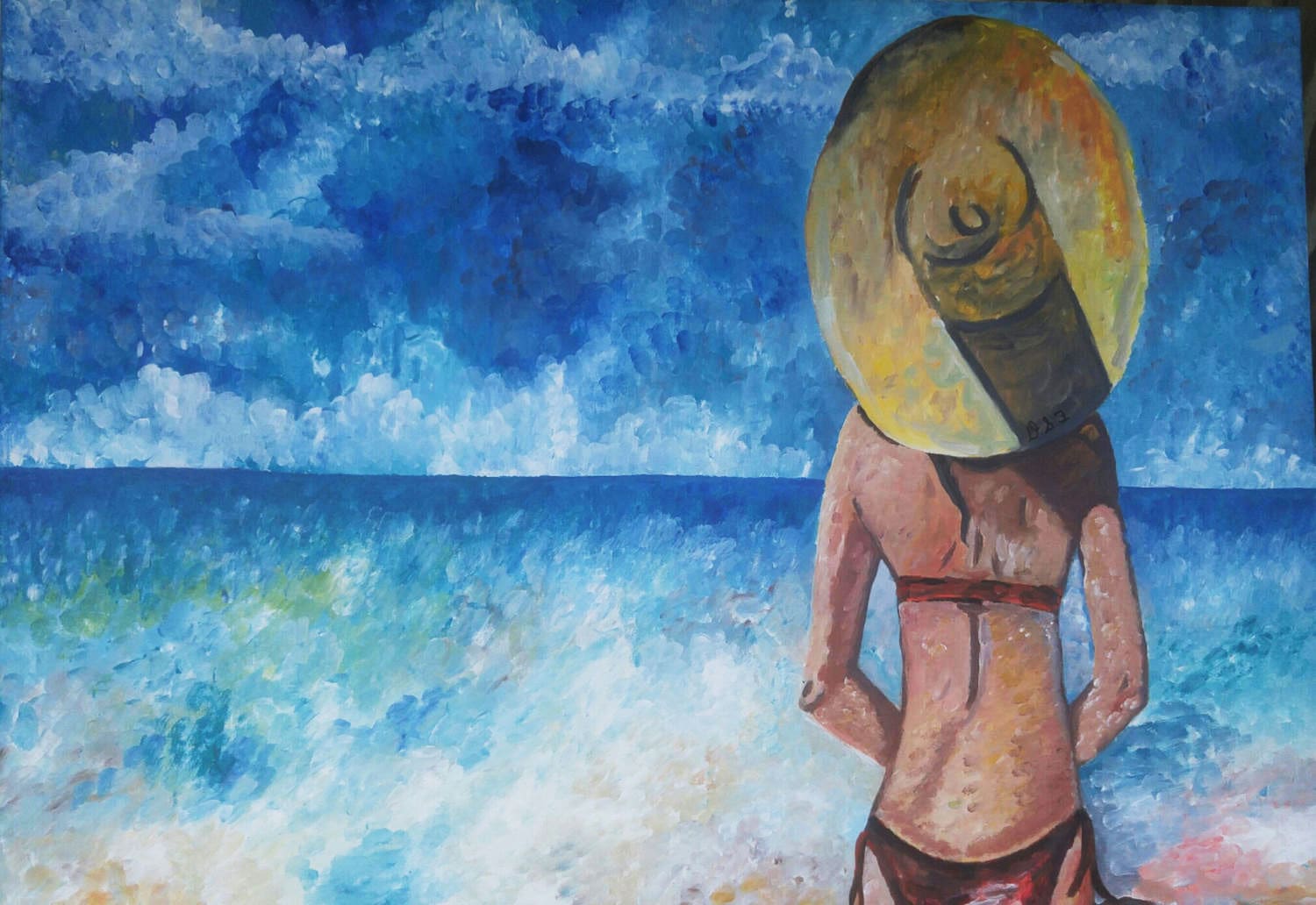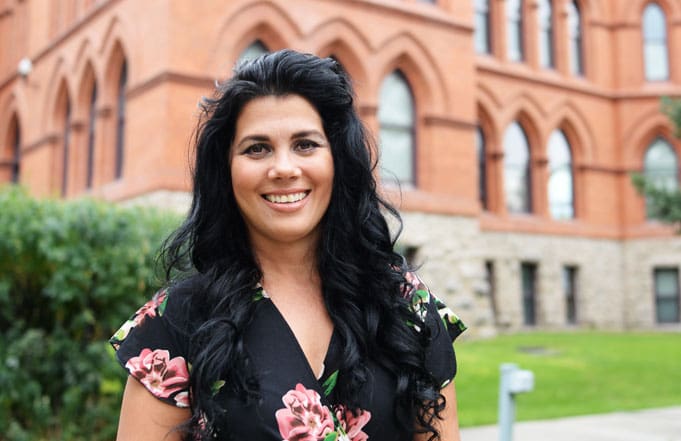July 31, 2017
Former student Damaris Soto Foster creates impressionistic paintings on the beaches of Puerto Rico when she’s not collecting rainwater or working in her garden. She recently returned to Dillon to visit family and reminisce about her time in the fine arts program at the University of Montana Western.

In Damaris Soto Foster’s art, the brush strokes are not obscured. She paints in the style of Monet, thick splotches of paint stacked across the canvas. Impressionist art like her piece “Lacking Depth,” often communicates more about the artist than it does the subject. Fine details like the wavering horizon line and the ambiguous intersection of ocean and sand make her work feel like it’s alive, breathing.
Like most students, Foster’s journey to Montana Western was long and strange. She grew up in Aguado, Puerto Rico before moving to Rincon. Nicknamed the “Caribbean’s Hawaii,” Rincon, Puerto Rico is known for its beautiful beaches and optimal surfing conditions (in 1968, the city hosted the World Surfing Championship). The beaches of Puerto Rico’s western edge have obviously influenced Foster’s art.
At the age of 33, she met her husband Jack Foster, and they moved with her three kids to Dillon, Montana. Damaris Foster enrolled in the University of Montana Western’s Fine Arts program and started taking classes while working and trying to raise a family. The transition was not without its difficulties:
“It was challenging! I hadn’t attended school for twenty years; English is my second language; I had never turned on a computer; and I was raising three children (who were adjusting to a very new and different culture as well). The weather was hard on my body—the cold dry air and high elevation made it difficult for me to breathe, and therefore to think,” she said.
What she said about computers doesn’t surprise me; after graduating from the university, Damaris and her husband moved back to Puerto Rico where they live relatively technology-free. I asked her how her husband deals with being an expatriate.
She said, “My husband loves many aspects of living in Puerto Rico (I think in ways he likes it more than I do). We live off the grid, i.e., we are not connected to any water or electric supply. We live without electricity and collect rain water; when it doesn’t rain, we don’t have water—we love this, as it continually reminds us of our dependence on God’s provision. We grow our own food for the most part and live simply and sustainably. This, among other things, allows me to work.”
Work means painting, which Damaris excelled at while attending Montana Western. She won first prize in a 3-D Art competition and graduated Summa Cum Laude. Gracious and humble, she gives credit to the Learning Center, staff, faculty, the block schedule, and her husband for her success. She stated that math was her most difficult subject: “My first exposure to college math almost gave me a heart-attack; in Puerto Rico, math is not too popular and many high schoolers, at best, are exposed to what would be 6th grade math in Montana—Puerto Rico is really behind!!”

On the university’s influence on her as an artist, she said, “Montana in general, and the University of Montana Western in particular, exposed me to new ways of thinking and to an understanding that the world was much larger than Puerto Rico. Puerto Rico focuses so much on its past and culture, as an artist I was only exposed to very limited subject matter. Taking Art History courses with Professor Glen Bodish changed me dramatically as an artist. I became more convinced that being an artist consists of not just having the skills, but rather having something to say, i.e., important subject matter.”
Although Claude Monet is her biggest influence as far as aesthetics are concerned, she cites George Grosz as an influence when it comes to choosing subject matter. In addition to her beautiful paintings of the Puerto Rican oceanside, she also has works which tackle issues like mental health and political corruption.
Damaris and Jack Foster were recently in Dillon. I suppose for people who live in the Caribbean, Montana is an exotic location for a summer vacation. On the trip, she said:
“We primarily visited our loved ones. We visited two of our children: Orlando Medina (22 years old) and Yahaira Medina (20 years old) whom still live in Dillon; they love Dillon and Montana. While in Dillon, we visited the University of Montana Western (my husband is also a graduate of Western) and our many friends still here. Mike Piazzola has been a great friend of my husband for many years and was always a great friend and help to me as well.”
“The University of Montana Western is more than just a place for us—our lives were changed and molded here in many positive ways—it is still our home in a number of ways. We love to walk, holding hands, around the beautiful campus!”
I actually saw Damaris and her husband walking around the campus while they were in town, hand in hand. Somehow, I could tell they were alumni. Maybe it was the way they looked at the buildings, or the fact that they weren’t escorting around a young potential student. I hope the visuals of Dillon stay with Damaris when she returns to Puerto Rico. The sharp angles of Main Hall’s architecture, the sprinkler mist dappled with iridescent light at sunset, it could make for a lovely painting.